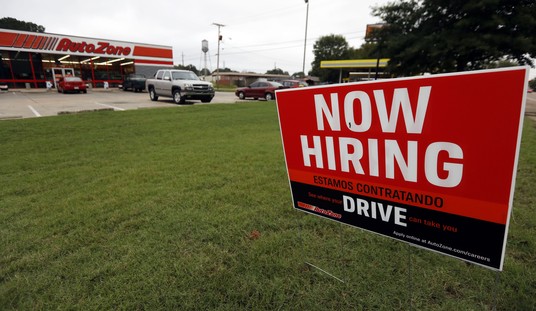We’ve noticed the cash shortfalls at Social Security for more than a year, and now they appear to be permanent. For the first time, the Social Security Administration will start cashing in its IOUs from the Treasury in order to meet its benefits obligations. Unfortunately, the Treasury doesn’t have the cash, either:
The retirement nest egg of an entire generation is stashed away in this small town along the Ohio River: $2.5 trillion in IOUs from the federal government, payable to the Social Security Administration.
It’s time to start cashing them in. … Too bad the federal government already spent that money over the years on other programs, preferring to borrow from Social Security rather than foreign creditors. In return, the Treasury Department issued a stack of IOUs — in the form of Treasury bonds — which are kept in a nondescript office building just down the street from Parkersburg’s municipal offices.
Now the government will have to borrow even more money, much of it abroad, to start paying back the IOUs, and the timing couldn’t be worse. The government is projected to post a record $1.5 trillion budget deficit this year, followed by trillion dollar deficits for years to come.
Social Security’s shortfall will not affect current benefits. As long as the IOUs last, benefits will keep flowing. But experts say it is a warning sign that the program’s finances are deteriorating. Social Security is projected to drain its trust funds by 2037 unless Congress acts, and there’s concern that the looming crisis will lead to reduced benefits.
The IOUs won’t last. Technically, they’re worthless now. The Treasury doesn’t have the cash to reimburse Social Security, and we’ll have to sell more debt on the lending markets in order to finance the benefits in the short run.
Moody’s sees the pressure on the debt as a risk to the US’s AAA credit rating:
A rise in the proportion of its revenue that the U.S. government spends servicing its debt over the next 10-years, as outlined in the federal budget in February, would see the U.S. government’s Aaa rating come under pressure, Moody’s Investors Service said Monday.
Federal debt affordability has “for the time being” not deteriorated, despite the U.S.’s rising deficit, and is not yet at a level that threatens the rating, Moody’s said in its latest quarterly report on Aaa-rated sovereigns. …
And the 10-year outlook in the budget shows a continuous rise in the debt to GDP ratio and in the debt affordability ratio. The outlook shows the ratio of interest to revenue deteriorating to around 18%, which was roughly the peak level when interest rates were high in the 1980s.
“If such a trajectory were to materialize, there would at some point be downward pressure on the Aaa rating of the federal government,” Moody’s said.
A downgrade in our credit rating would mean that we would have to offer higher return rates on our debt. That would cost us more to service in the short run and make retiring the debt an ever-increasing improbability. The debt cycle would continue to escalate as we keep paying benefits with cash we don’t have, adding to the debt and putting our credit at even greater risk.
The wheels have begun to fly off the entitlement juggernaut.
Update: Steve Eggleston has more background.









Join the conversation as a VIP Member